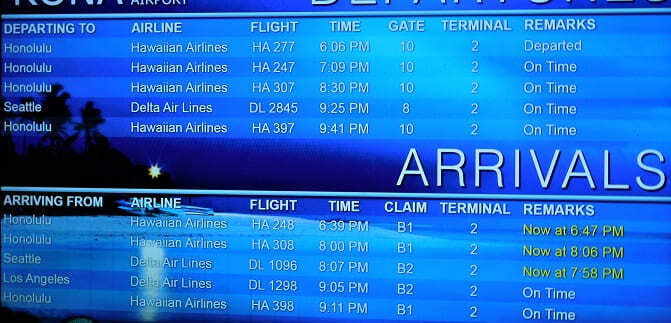
 Data Structure
Data Structure Networking
Networking RDBMS
RDBMS Operating System
Operating System Java
Java MS Excel
MS Excel iOS
iOS HTML
HTML CSS
CSS Android
Android Python
Python C Programming
C Programming C++
C++ C#
C# MongoDB
MongoDB MySQL
MySQL Javascript
Javascript PHP
PHP
- Selected Reading
- UPSC IAS Exams Notes
- Developer's Best Practices
- Questions and Answers
- Effective Resume Writing
- HR Interview Questions
- Computer Glossary
- Who is Who
What is the full form of ETA?
Introduction
Estimated Time of Arrival (ETA) or Assessed Season of Appearance is habitually utilized in transportation, operations, and undertaking the executives to depict the expected appearance season of an item, thing, or person.

The assessed appearance time (estimated time of arrival) is, in many cases, decided to utilize various factors, including distance, speed, strategy for transportation, traffic conditions, and other external factors. ETA can be useful for effectively managing timetables, creating plans, and allocating resources. Customers, clients, and other stakeholders are often notified of the anticipated arrival time.
Meaning of ETA
"Estimated Time of Arrival" is referred to as ETA. It refers to the anticipated or forecasted moment when a person, shipment, or cargo will likely appear at a specific place or destination.
The normal appearance time (estimated time of arrival) is, in many cases, decided in light of various factors, including the distance to be voyaged, the method of transportation, the climate, how much traffic is there, and other natural variables.
ETA is frequently shared with customers, clients, and stakeholders to inform them about the estimated arrival time since it may be useful in managing schedules, formulating plans, and efficiently organizing resources.
ETA Usage in Transportation
ETA (Estimated Time of Arrival) is a significant measure in the transportation industry used to coordinate logistics and delivery timetables. The following are some applications for ETA in transportation
Shipment Tracking ETA tracks shipments and gives consumers up-to-the- minute updates on the estimated delivery time for their items. Customers may better organize their schedules and ensure they'll be there to pick up the delivery by doing this.
Resource Allocation Transportation businesses utilize ETA to allocate resources effectively. Companies may guarantee that items are delivered on time by planning their routes, timetables, and workers following the predicted arrival times of shipments.
Customer Service Proactive updates on clients' shipments are also given via ETA. Companies may increase customer satisfaction and lower the volume of customer questions by providing ETA information to consumers.
Delay Management ETA is often utilized in transportation to handle delays and unforeseen circumstances. Companies may lessen the effects of delays and guarantee that products are delivered as promptly as feasible by tracking the status of shipments and modifying schedules accordingly.
Importance of ETA
The estimated arrival time is critical in numerous areas, including project executives, coordinated factors, and transportation. The following are some arguments in favor of ETA
Resource Planning Using ETA makes planning resources such as transport trucks, drivers, and other logistics easier. Companies may deploy resources more effectively and offer guarantee that they are accessible when needed by knowing the ETA.
Time Management By providing an approximate arrival time for a package or a person, ETA aids in time management. This aids in effective resource coordination, planning, and schedule management.

Customer Satisfaction ETA plays a key role in raising customer satisfaction. Companies may inform consumers about the anticipated delivery time by giving them an accurate ETA, which can lower anxiety and boost confidence.
Transparency ETA contributes to transparency in logistics and transportation. Companies may show their dedication to providing excellent customer service and foster confidence by providing consumers with ETA information.
Cost-Reduction ETA aids in cost reduction by reducing the time and resources needed for transportation. By knowing the ETA, companies can design effective routes, prevent pointless delays, and reduce the need for extra pay or additional personnel.
ETA Alternatives
Although the measurement "Estimated Time of Arrival" (or "ETA") is now and again utilized, there are a few choices that can be applied in different situations. Here are a few instances
ETD (Estimated Time of Departure) An alternate term for ETA, ETD denotes when a shipment, item, or someone is expected to leave a certain area. ETD is helpful when departure time rather than arrival time is the main consideration.
Lead moment This term is used from when a product or service is purchased until it is delivered. Lead time, a crucial statistic in supply chain management, covers the time needed for manufacture, transit, and delivery.
TAT (Turnaround Time) TAT is how much time is expected to achieve an undertaking or interaction, including the time required for arranging, doing, and conveying. In service sectors like healthcare, where it is used to gauge how long it takes for a patient to obtain treatment, TAT is a crucial indicator.
Conclusion
ETA (Estimated Arrival Time) is a critical measure in logistics, project management, and transportation. The estimated time of arrival, or ETA, refers to the anticipated arrival of a product, item, or person at a certain area or destination. The expected arrival time (ETA) is determined using several variables, including the route, speed, method of transportation, traffic, and other environmental factors.
FAQs
Q1. How is ETA determined?
Ans: The expected arrival time (ETA) is determined using several variables, including distance, method of transportation, weather, traffic, and other external factors. The computation could also use real-time and historical data to get a precise ETA.
Q2. How are ETA updates given to clients?
Ans: Clients can get an estimated arrival time using different techniques, including email, instant message, call, or web-based global positioning framework. The notification might contain the following
The expected arrival time.
The condition of the delivery.
Any updates or modifications to the ETA.
Q3. What happens if the ETA is pushed back?
Ans: Suppose the estimated time of arrival is deferred. In that case, the transportation supplier might illuminate the client and propose a reexamined estimated time of arrival as well as a legitimization for the postponement. Depending on the terms and circumstances of the shipping contract, the delay could incur extra expenses or penalties.

